After pruning a network to remove insignificant links, you can further simplify the model by merging pipes of similar dimensions and gradients. If two pipes have very similar widths and gradients and their invert levels are compatible, they can be replaced by a single pipe and the connecting node can be deleted. This process reduces the size of the model without significantly affecting the results of simulations.
To merge similar links:
- Open the 'Langley Pruned' network. Either right-click the network in the Explorer window and select Open from the pop-up menu, or drag the network icon into the InfoWorks ICM main window.
- Set up the merging options:
- From the Model menu, choose the Simplify
 Simplification options option. The
Simplification Options dialog is displayed.
Simplification options option. The
Simplification Options dialog is displayed.
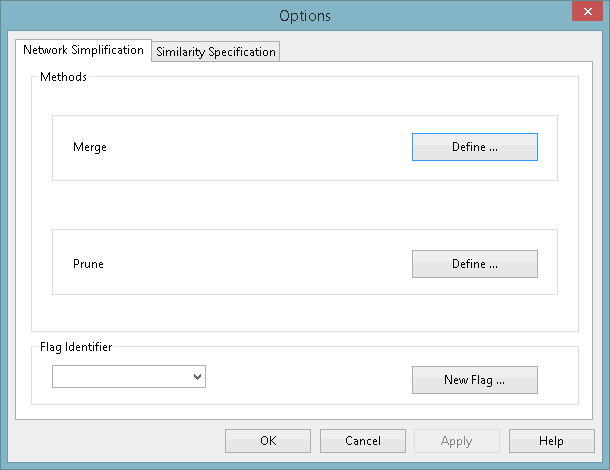
- Click the Network Simplification tab.
- In the Merge pane, click the Define... button. The
Merge Definition dialog is displayed.
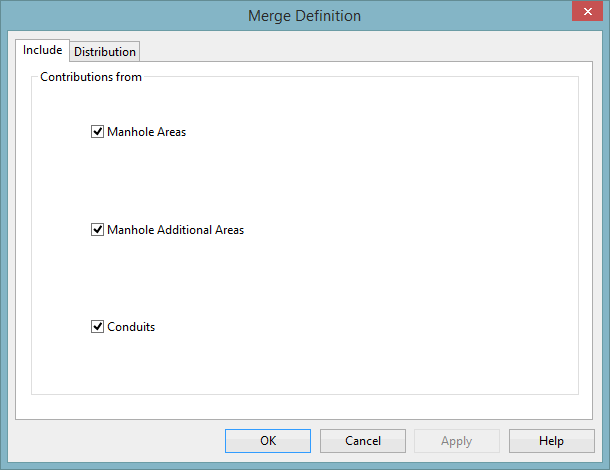
This dialog is used to determine the storage compensation during merging and pruning.
- Click OK to close the Merge Definition dialog.
- From the Model menu, choose the Simplify
- In the
Simplification Options dialog, click the Similarity Specification tab. The tab shows the rules that will be applied when attempting to merge pipes.
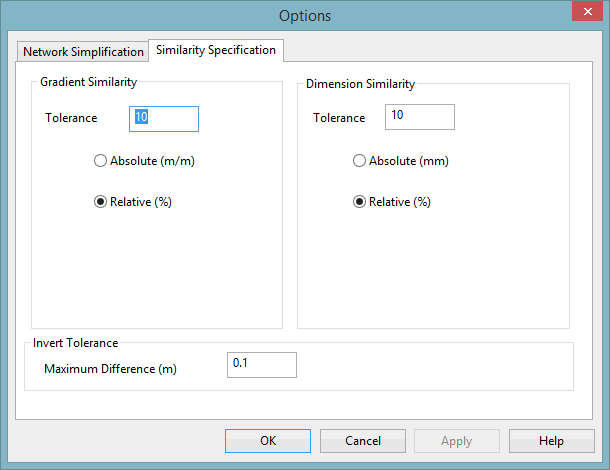
- Change the tolerance values so that the gradients and dimensions are within 10% of each other and the inverts are within 0.1 m in order for the links to be merged. Pipes can only be merged if they are the same shape.
- Click OK.
- Display the
Links grid
Select the Grid windows
 New link window option from the Windows menu to display the grid containing the properties for all the links in the network , and investigate the links:
New link window option from the Windows menu to display the grid containing the properties for all the links in the network , and investigate the links:
- Re-organise the columns so that you can see the Length, Shape ID, Width, Height and Gradient.
To change the width of a column, place the pointer on the divider line to the right of the column header and drag to left or right. To change the order of columns, click a column header to select the column, then drag the column header to its new position; hold down CTRL when selecting more than one column.
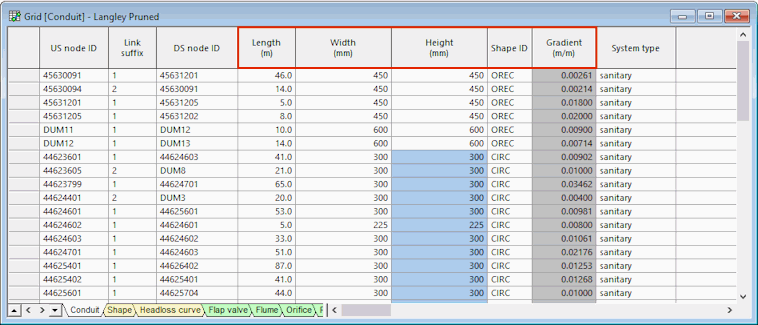
- Sort the grid in descending order of Shape ID. Right-click the 'Shape ID' column itself (not the header) and choose the Sort on Selected Columns Descending option from the pop-up menu.
- Mark the links that have a shape other than CIRC (circular). To select the non-circular links, drag the mouse pointer down the grey column at the left of the window.
- Find the selection on the GeoPlan. Right-click the GeoPlan and choose Zoom to selection from the pop-up menu.
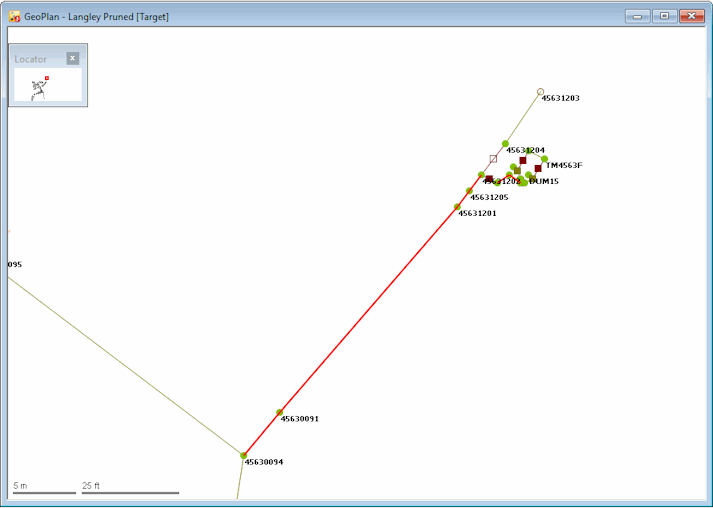
These pipes form a run of open channels that leads to the storage tanks.
- Re-organise the columns so that you can see the Length, Shape ID, Width, Height and Gradient.
To change the width of a column, place the pointer on the divider line to the right of the column header and drag to left or right. To change the order of columns, click a column header to select the column, then drag the column header to its new position; hold down CTRL when selecting more than one column.
- Find a run of similar links:
- Clear the current selection.
Either click the
 (Clear selection) button from the toolbar or, on the GeoPlan, select the Selection
(Clear selection) button from the toolbar or, on the GeoPlan, select the Selection  Clear selection option from the pop-up menu.
Clear selection option from the pop-up menu.
- Zoom in on the branch of the network that starts at node '44623605' (in the north-west of the network).
Use the
 (Find in GeoPlan) tool to zoom to the node '44623605'.
(Find in GeoPlan) tool to zoom to the node '44623605'.
- Either click the
 (Select similar links) tool or select the Simplify
(Select similar links) tool or select the Simplify  Select similar links mode for merging option from the Model menu.
Select similar links mode for merging option from the Model menu.
- Click the first link in the run.
A dialog is displayed stating that the gradients of this link and the next in the run are not similar enough for the links to be merged.
The Select similar links tool only checks as far as the next junction in each direction (hence the message about not being able to cascade upstream); you cannot merge through a junction.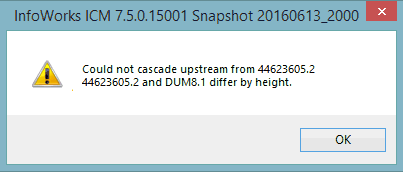
- Click OK to clear the dialog, and the selected link is highlighted on the GeoPlan.
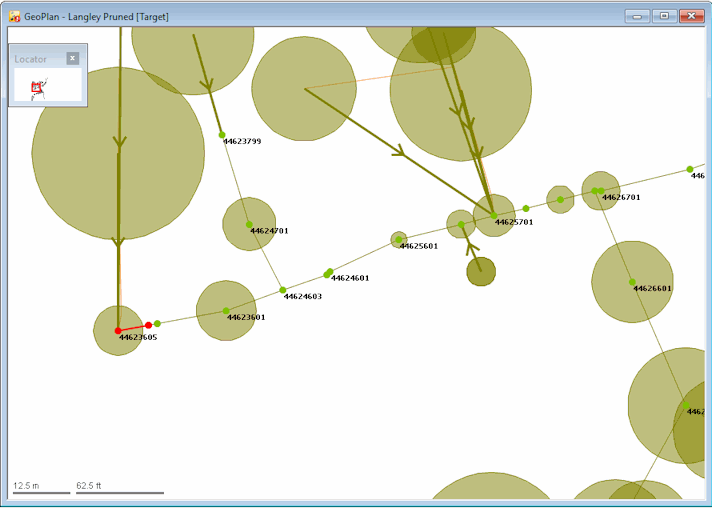
- Click alternate links along each run until you find one where the pipes are similar.
You only need to check every other link because the tool tests for similarity both upstream and downstream.
No message is displayed but the similar links are highlighted.
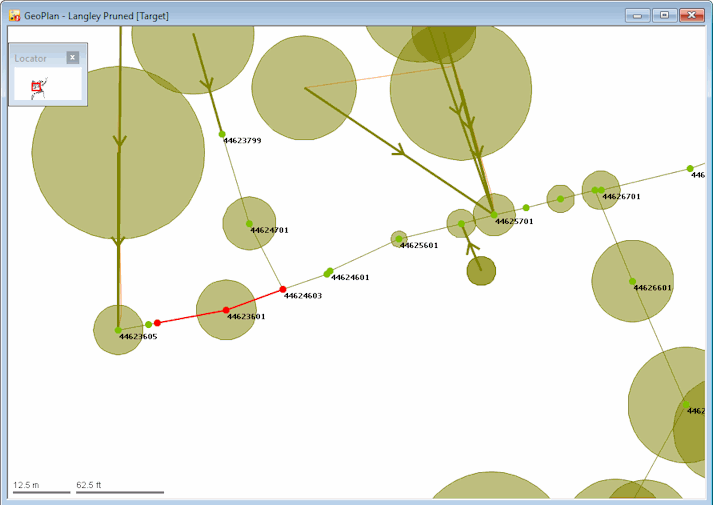
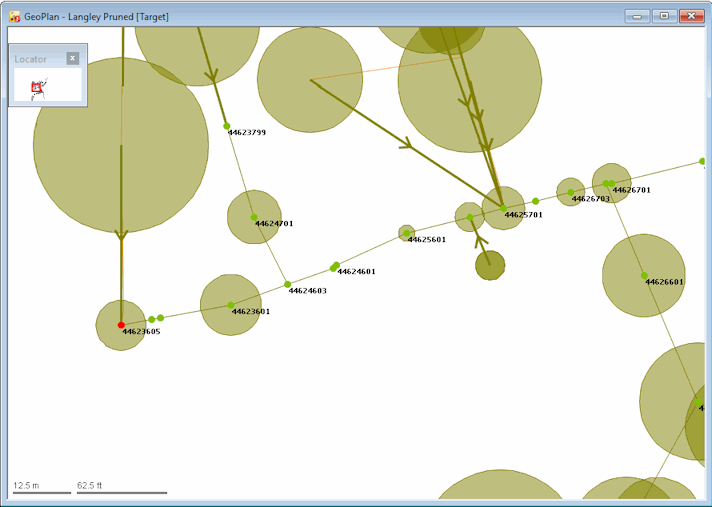
- Clear the current selection.
Either click the
- Merge the similar links:
- Select the Simplify
 Merge selection option from the Model menu. The
Network Simplification dialog is displayed, showing the number of links and nodes to be deleted.
Merge selection option from the Model menu. The
Network Simplification dialog is displayed, showing the number of links and nodes to be deleted.
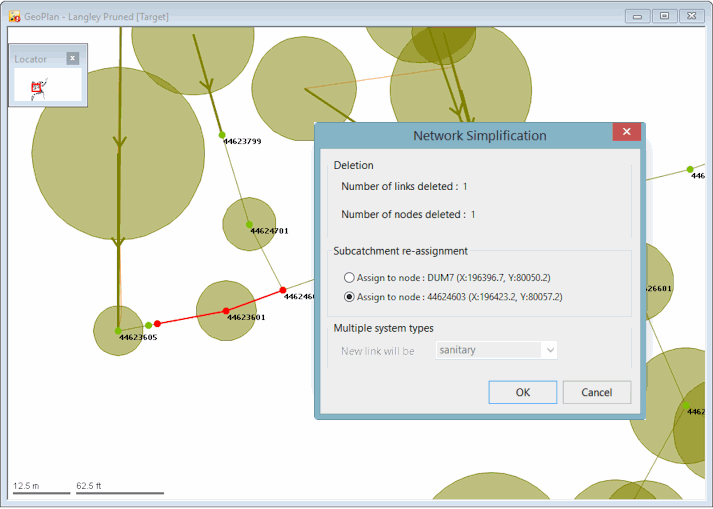
If there are nodes to be deleted that have subcatchments draining to them, then you can choose to move them to the nearest upstream or downstream node.
- Choose the node where the subcatchments along the run should be re-assigned.
- Click OK. The pipes are merged into a single link and the intermediate nodes are deleted. The subcatchments are kept but now drain to a single node (in this case, the node at the top of the run).
The green lines with arrows show the links from the subcatchments to the selected node.
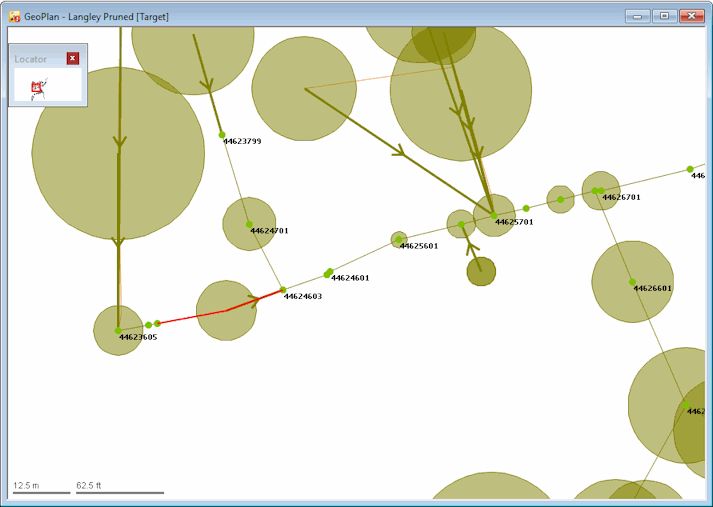
- Click the merged link with the
 (Edit object geometry) tool to check that the link has bends at the points where there used to be nodes.
(Edit object geometry) tool to check that the link has bends at the points where there used to be nodes.
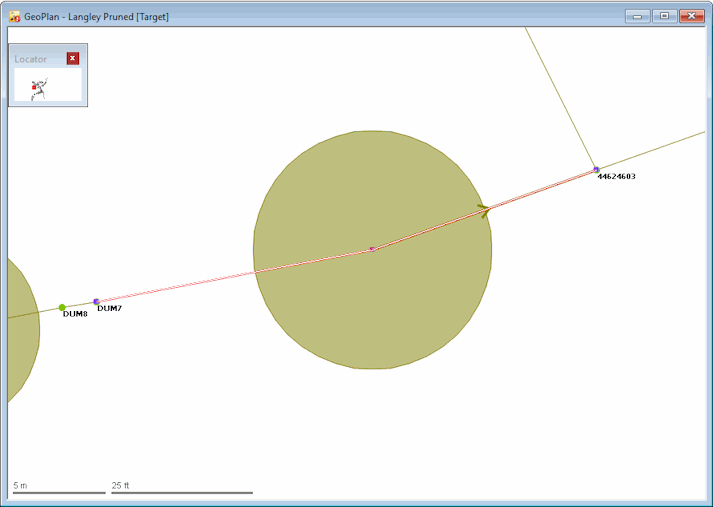
- Select the Simplify
- Repeat the merge process for other runs in the network. In this way you can reduce the number of links to about 48 (depending on the order in which they are merged).
You can use CTRL + F12 as a shortcut for the Model
 Simplify
Simplify  Merge Selection option.
Merge Selection option.
- Commit the changes to the network and add a suitable comment. In the Explorer window, right-click the icon of the network you opened in Step 1 and select Commit changes from the pop-up menu. .
-
Validate the network.
Click the
 button on the
Validation toolbar or choose the Validate network option from the Network menu.
button on the
Validation toolbar or choose the Validate network option from the Network menu.
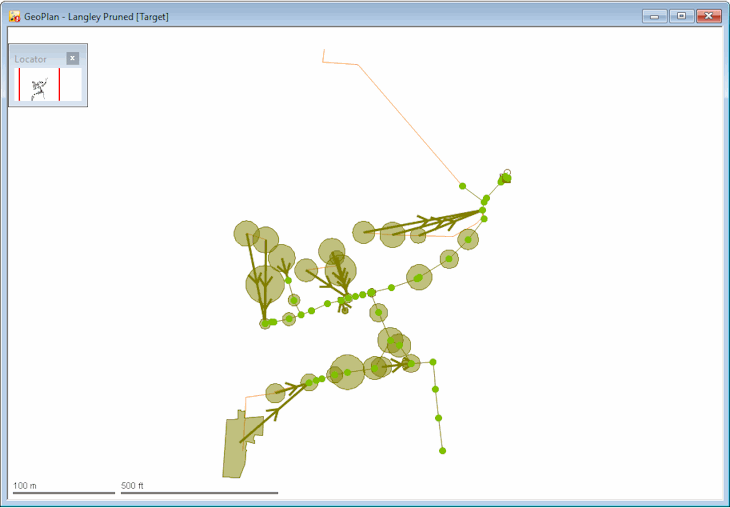
You can now compare the simplified model against the original network and see how the simulations differ.

Storage Compensation during Merging and Pruning

